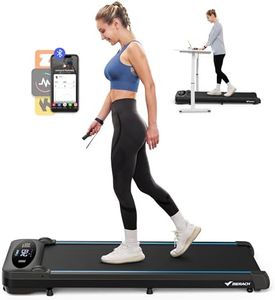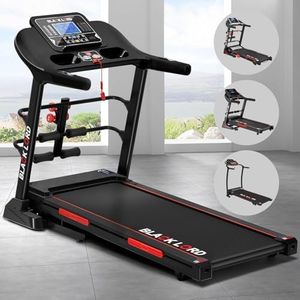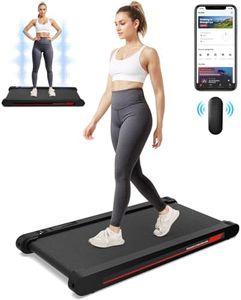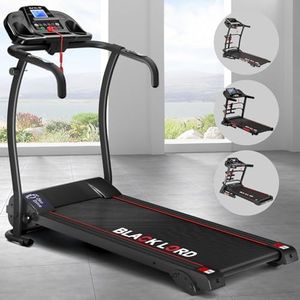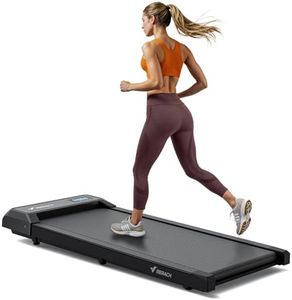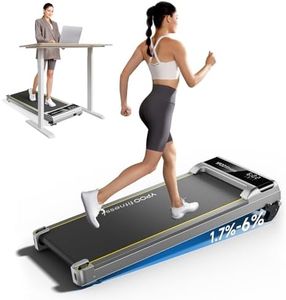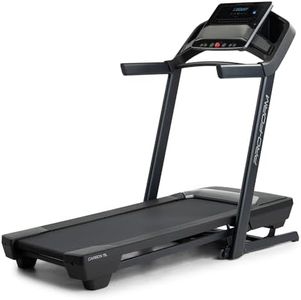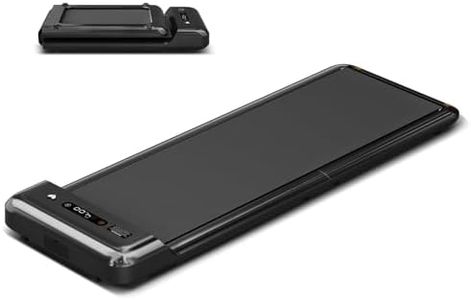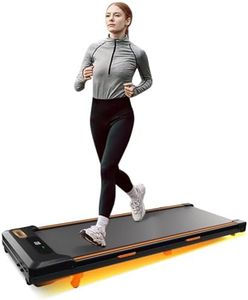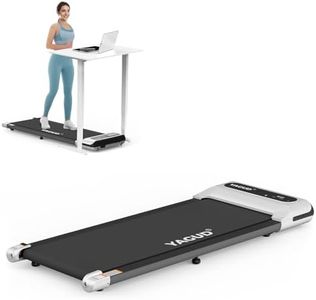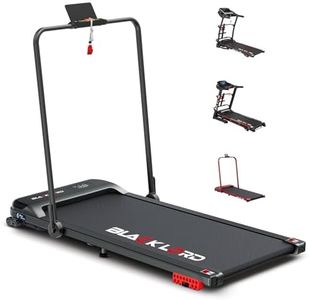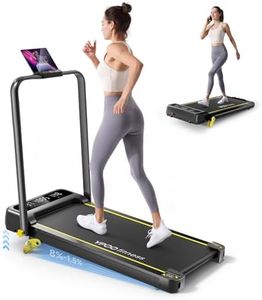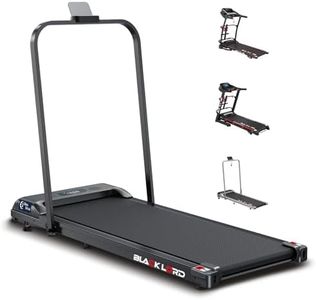We Use CookiesWe use cookies to enhance the security, performance,
functionality and for analytical and promotional activities. By continuing to browse this site you
are agreeing to our privacy policy
10 Best Budget Treadmills
From leading brands and best sellers available on the web.Buying Guide for the Best Budget Treadmills
When shopping for a treadmill, it's important to think about how you plan to use it and what features matter most to you. For some, walking a few times a week is enough, while others might want to run daily or train for longer distances. Understanding how much space you have for a treadmill and your comfort needs will also help guide your decision. By focusing on key specifications, you can find a treadmill that fits your lifestyle, delivers reliable performance, and helps you reach your fitness goals.Motor PowerMotor power, usually measured in horsepower (HP), tells you how much work the treadmill can handle. A higher number means a stronger motor, which is better for running and heavier users, while a lower number may be enough for walking or light jogging. Generally, for walking, look for motors rated around 1.5-2.0 HP; for jogging, 2.0-2.5 HP is ideal, and for frequent running or heavier weights, 2.5 HP or more is better. Consider your intended use: occasional walkers don’t need much power, but if you plan to run often or are a heavier person, opt for a higher HP to ensure smooth and durable performance.
Running Surface SizeThe running surface, or belt size, determines your level of comfort and safety while using the treadmill. A larger belt provides more space to move naturally, which is especially important for running, while a smaller belt might be fine for walking. For walking, a length of around 45 inches and width of 16-18 inches is sufficient; for running, a length of 50 inches or more and a width of 18-20 inches provides better security. If you’re tall or have a long stride, a longer and wider belt will prevent you from feeling cramped or off-balance.
Maximum SpeedThe treadmill’s top speed affects how challenging your workout can be. Walkers may only need up to 6 mph, joggers might want up to 8-10 mph, and runners typically look for treadmills that reach at least 10-12 mph. Think about your current fitness level and your goals—if you just want cardio walks, a lower maximum is fine, but if you plan to advance to jogging or running, a higher speed range gives you room to grow.
Incline FeaturesIncline settings allow you to simulate uphill walking or running, making workouts more challenging and engaging. Manual incline treadmills require you to adjust the angle by hand, usually before you exercise, while motorized incline lets you change settings with the push of a button as you go. If you want simple workouts, you may not need incline, but if you want to burn more calories or mix things up, look for a treadmill with a range of incline options. The more incline points available, the more varied your workouts can be.
Cushioning/Deck SuspensionCushioning or deck suspension refers to how much shock is absorbed as you use the treadmill. Good cushioning reduces the impact on your joints, making running or walking more comfortable and safer. Some treadmills offer basic padding, while others provide more advanced shock absorption. If you have sensitive knees or plan to use your treadmill frequently, pay attention to this feature to help prevent injuries.
Foldability and PortabilityFoldability is how easily a treadmill can be stored when not in use, and portability refers to how easily it can be moved. Some treadmills fold up and have transport wheels, which is great if you have limited space or need to store your treadmill after each workout. If your workout area is small or you want to keep your treadmill out of sight, focus on models that offer easy folding and lightweight transportation.
Weight CapacityWeight capacity tells you the maximum user weight the treadmill can safely support. This is important for both safety and the lifespan of the machine. If you’re close to or over the stated capacity, choose a treadmill rated for a higher weight to ensure durability and reliable operation.
Display and ControlsThe control panel usually shows key data like speed, distance, time, and calories burned. Some treadmills offer simple, easy-to-read displays, while others include additional workout programs or connectivity for apps. If you like tracking progress or want guided workouts, look for more advanced controls; if you prefer simplicity, focus on basic displays that cover your essentials.
